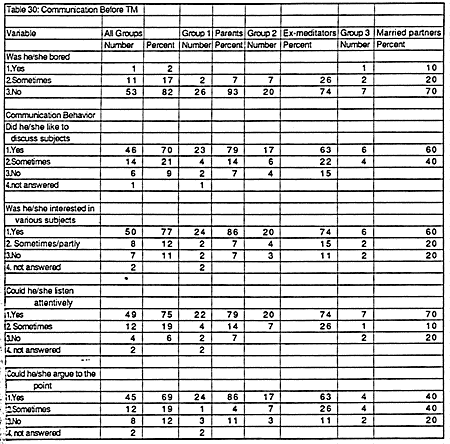
Kinhin is a Buddhist term for walking as meditation. It involves moving between periods of sitting meditation. This practice is common in many Mahayana and Theravada traditions. Walking as meditation has many benefits. Some practitioners prefer walking over sitting and a simple walk between two points can be very beneficial. This article explains the many benefits of walking for meditation. It's also worth looking at why Buddhists prefer walking as a form of meditation.
Meditation can be done anywhere you like. Find a quiet place and then stand at the end. Then, gently open your senses and observe your own body. As you walk, pay attention to the sensations and pressure in your feet. This can be repeated throughout your entire walk. This will allow you to become more mindful and calm. If you feel overwhelmed, this meditation is also an option. You can find more information about walking as meditation at the following links.

You can practice walking meditation by being still for a brief time. You can spend a few seconds standing still. Then, notice your body. Keep doing this for 10 to 20 minutes. Although you can walk longer distances, it's important to keep your pace in line with your body. Walking will make your mind less wandering. This does not mean that you are doing anything wrong. It just means that your mind needs some time to settle down.
Practice walking meditation by taking a few moments to reflect on your thoughts. Pay attention to the thoughts you receive. You might find it helpful to learn from what you encounter. By doing this, you will be able to bring your awareness into everyday life. Being aware of your surroundings is important. You can start to practice walking as meditation by following these steps.
Walking as meditation is a good practice. You need to be aware of your body's sensations and how it feels. Walking in nature is a great way to get your body relaxed and unaffected by distractions. Your body can be mindful and aware of all your feelings and emotions. When you let go of your thoughts, you will feel more at ease and peaceful. You'll be amazed at how much you feel relaxed when you walk like a meditation.

When practicing walking as meditation, you should pay attention to everything around you. It is important to be aware of the ground and movements of your legs. During walking, you should be aware of all sensations in your body. While walking, you should be aware and alert to your thoughts. This will help to put your mind at ease and allow you to concentrate more on the moment. It is a great way of practicing mindfulness. It is not meant to replace regular meditation sessions.
FAQ
What is the difference between calories and kilocalories in food?
Calories can be used to measure how much energy is in food. A calorie is a unit of measure. One calorie represents the energy required to raise one gram of water's temperature by one degree Celsius.
Kilocalories is another name for calories. Kilocalories measure in thousandths a calorie. For example, 1000 calories equals one kilocalorie.
How can I live my best everyday life?
To live a happy life, the first step is to discover what makes you happy. Once you know what makes you happy, you can work backwards from there. Asking others about their lives can help you to see how they live the best life possible.
You can also find books such as "How to Live Your Best Life" written by Dr. Wayne Dyer. He discusses finding happiness and fulfillment throughout our lives.
What is the difference of fat and sugar?
Fat is an energy source that comes directly from food. Sugar is a sweet substance that can be found naturally in fruits or vegetables. Both fats as well as sugars contain the same amount of calories. But, fats have more calories than sugars.
Fats can be stored in the body, which can lead to obesity. They cause cholesterol buildup in arteries which may lead to heart attacks and strokes.
Sugars are quickly absorbed by the body and provide instant energy. This causes blood glucose levels to rise. High blood glucose levels can be dangerous because it increases the risk of developing type II diabetes.
How can I get enough vitamins?
The majority of your daily needs can be met through diet alone. Supplements are an option if you are low in any vitamin. A multivitamin supplement can provide all the vitamins you require. You can also buy individual vitamins at your local pharmacy.
Talk to your doctor about the best foods for vitamins if you're concerned about not getting enough nutrients. You can find vitamins K and E in dark green leafy vegetable such as spinach, kale and turnip leaves, as well a variety of sweet potatoes and sweet potatoes.
Ask your doctor for advice if you are unsure how much vitamin to take. Your medical history and current health will help you determine the best dosage.
What causes weight loss as we age?
How can you find out if your weight has changed?
When there is more muscle mass than fat, weight loss can occur. This means that daily calories should be less than daily energy. Low activity levels are the most common cause for weight loss. You can also lose weight due to stress, illness, pregnancy, hormonal imbalances and certain medications. When there is more fat than muscles, it's called weight gain. This happens when people consume more calories than they burn during the day. It can be caused by overeating or increased physical activity as well hormonal changes.
We eat less calories than we burn, which is the main reason our bodies lose weight. Exercise regularly increases your metabolism rate, which allows you to burn more calories every day. This does not necessarily mean that we will get thinner. What is more important is whether or not our body is losing or gaining weight. We will lose weight if we burn more calories than we consume. But, if we consume far more calories than what we burn, then we actually store them as fat.
As we age, we become less agile and don't move as often. We also tend to eat less food than we did when we were younger. We tend to gain weight. We also tend to look larger because we have more muscle.
There's no way to tell how much weight you've lost unless you weigh yourself every week. There are many options for measuring your weight. You can measure your waist, hips and thighs as well as your arms. Some prefer to use bathroom scales, while others prefer tape measures.
For a better track of your progress, try to weigh yourself once per week and measure your waistline once every month. To track your progress, you can also take photos every few months of yourself to see how far it has come.
You can also find out how much you weigh by looking up your height and weight online. If you are 5'10" tall, and you weigh 180 lbs, then you would probably weigh 180 lbs.
Do I need to count calories
You might wonder, "What's the best diet for me?" or "is counting calories necessary?" It depends on many factors such as your current health, personal goals, preferences, and overall lifestyle.
The Best Diet - Which One Is Right To You?
My current health status, personal goals, preferences, and overall lifestyle all play a role in choosing the right diet. There are many diets out there, some good and some bad. Some are better for certain people than others. What should I do then? How can I make the right choice?
These are the questions that this article attempts to answer. It begins by briefly describing the various diets available today. Then we will discuss the pros & cons of each kind of diet. The final step is to determine which one is right for you.
Let's start by taking a look at the various types of diets.
Diet Types
There are three main types, low fat, high protein, or ketogenic diets. Let's take a look at them all below.
Low Fat Diets
A low-fat diet reduces the amount of fats you eat. This is accomplished by decreasing the intake of saturated fats such as butter and cream cheese. You can replace them with unsaturated oils (olive oil and avocados) People who are looking to lose weight quickly and easily will benefit from a low-fat diet. However, this kind of diet may cause problems such as constipation, heartburn, and indigestion. In addition, it may lead to vitamin deficiencies if a person doesn't get enough vitamins from their food.
High Protein Diets
High protein diets reduce carbohydrates to favor of proteins. These diets are more protein-rich than others. These diets can help increase muscle mass and decrease calories. Unfortunately, they can't provide adequate nutrition for those who eat regularly. They are not suitable for all people because they can be restrictive.
Ketogenic Diets
Ketogenic diets also go by the name keto diets. They are high in fat and moderate in protein and carbs. They are typically used by athletes and bodybuilders because they allow them to train harder and longer without getting tired. You must adhere to all side effects, including fatigue, headaches, nausea and headaches.
Exercise: Good for immunity or not?
Exercise is good for your immune systems. Exercise boosts the production of white blood cells, which can fight off infections. Your body also eliminates toxins. Exercise can help prevent heart disease and cancer. Exercise can help reduce stress.
Exercising too frequently can make your immune system weaker. When you exercise too hard, your muscles will become sore. This can cause inflammation and swelling. To fight infection, your body will produce more antibodies. This can lead to allergic reactions and other autoimmune disorders.
So, don't overdo it!
Statistics
- According to the 2020 Dietary Guidelines for Americans, a balanced diet high in fruits and vegetables, lean protein, low-fat dairy and whole grains is needed for optimal energy. (mayoclinichealthsystem.org)
- The Dietary Guidelines for Americans recommend keeping added sugar intake below 10% of your daily calorie intake, while the World Health Organization recommends slashing added sugars to 5% or less of your daily calories for optimal health (59Trusted (healthline.com)
- WHO recommends consuming less than 5% of total energy intake for additional health benefits. (who.int)
- This article received 11 testimonials and 86% of readers who voted found it helpful, earning it our reader-approved status. (wikihow.com)
External Links
How To
What does the word "vitamin" mean?
Vitamins are organic substances found naturally in food. Vitamins are essential for our bodies to absorb nutrients from the foods we eat. Vitamins cannot be made by the body; they must be taken from food.
Two types of vitamins exist: water-soluble vitamin and fat-soluble vitamin. Water-soluble vitamins dissolve in water easily. You can find vitamin C,B1 or thiamine, B2 or riboflavin and B3 or niacin, B3/niacin, B6/pyridoxine, folic Acid, biotin and pantothenic Acid as examples. The liver and fatty tissues are home to fat-soluble vitamins. Examples include vitamin D, E, K, A, and beta carotene.
Vitamins can be classified by their biological activity. There are eight major groups of vitamins:
-
A - Vital for normal growth and maintaining good health.
-
C – essential for proper nerve function.
-
D - essential for healthy bones, teeth, and gums.
-
E - Required for good vision & reproduction
-
K - essential for healthy muscles, nerves, and bones.
-
P - Vital for strong bones and teeth.
-
Q - Aids in digestion and absorption.
-
R - Required for red blood cell production
The recommended daily allowance for vitamins (RDA) varies based on gender, age, and physical conditions. The U.S. Food and Drug Administration (FDA) sets the RDA values.
For adults over 19 years, the RDA is 400 mg per day for vitamin A. Pregnant mothers need 600 micrograms per days because it is vital for the development and growth of their baby. Children ages 1-8 require 900 micrograms per day. Babies under one-year old require 700 mg per day. Between 9 and 12 years of age, however, this drops to 500 mg per day.
Children aged 1-18 years need 800 micrograms daily, while children overweight require 1000 micrograms per days. Children who are severely obese or underweight will need 1200 micrograms each day.
Children ages 4-8 years who have been diagnosed with anemia need 2200 micrograms per day of vitamin C.
2000 micrograms daily is required for adults over 50 to maintain their general health. Due to their increased nutrient needs, pregnant and breastfeeding women need 3000 micrograms daily.
1500 micrograms is the recommended daily intake for adults aged 70+, who lose approximately 10% of muscle each year.
Women who are pregnant and lactating need more nutrients than the RDA. Pregnant women require 4000 micrograms daily during pregnancy, and 2500 micrograms every day after birth. Breastfeeding moms need 5000 micrograms each day when breastmilk production occurs.